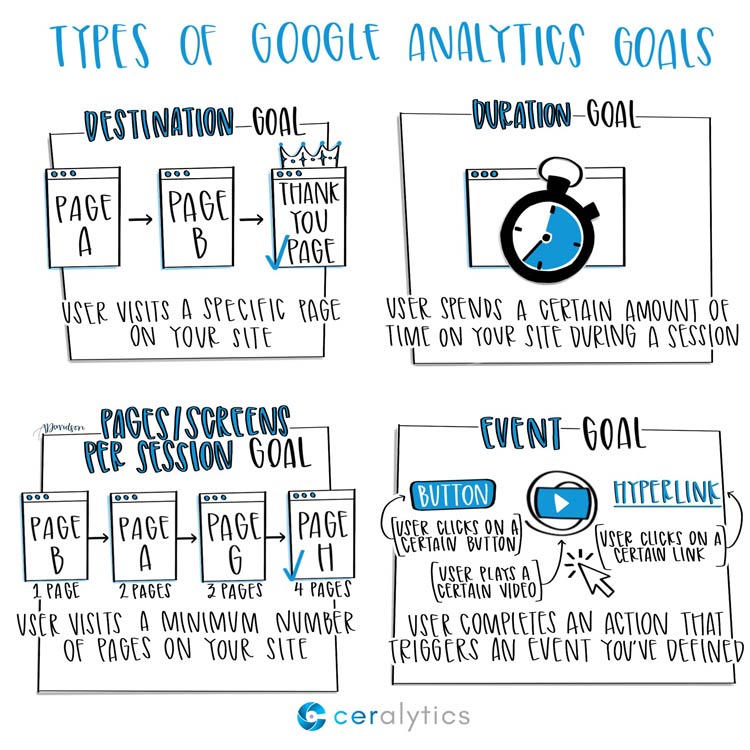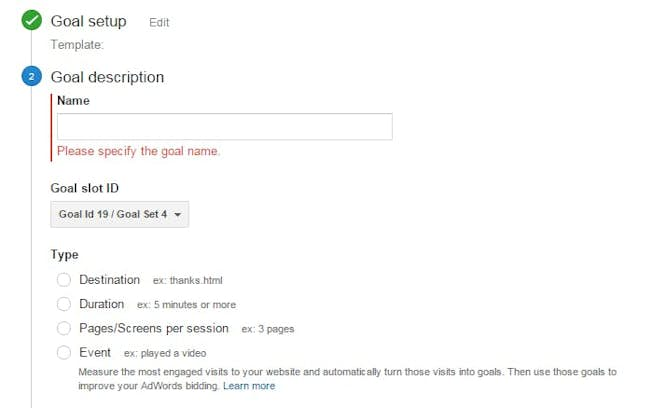What Data Is Google Analytics Goals Unable to Track: A Total Guide
What Data Is Google Analytics Goals Unable to Track: A Total Guide
Blog Article
Discover the Limitations of Google Analytics Goals: Unveiling the Information Kind That Remain Untrackable
As services progressively count on data-driven decision-making, comprehending the restrictions of devices like Google Analytics ends up being extremely important. While Google Analytics Goals deal important insights into user interactions, there exist data kinds that avoid tracking, posturing obstacles to a detailed understanding of customer actions. These untrackable information types increase inquiries regarding the accuracy and completeness of the analytics data that organizations heavily depend upon for their digital techniques. Interested to reveal the hidden blind areas in your information analysis process?
Insufficient User Journey Tracking
Incomplete user journey tracking within Google Analytics can impede the ability to accurately analyze user habits. When the user journey is not fully tracked, there are gaps in the data that avoid a detailed understanding of just how customers connect with a website. This lack of understanding can result in missed out on possibilities for optimization and improvements to the individual experience.
One common issue with insufficient customer journey tracking is the failure to see the full course that users take before finishing an objective or leaving the site. Without this details, it is testing to recognize where individuals may be experiencing challenges or friction points that stop them from transforming. In addition, insufficient tracking can cover the influence of specific advertising and marketing initiatives or site changes on customer habits.
To address this constraint, it is essential to establish up proper monitoring systems within Google Analytics to catch the entire customer journey. This might include establishing occasion monitoring, objective funnels, or utilizing devices like Google Tag Manager to ensure that no vital communications go unrecorded. By acquiring a thorough view of the customer journey, web site proprietors can make more enlightened decisions to enhance customer engagement and drive conversions.
Acknowledgment Challenges
Browsing through acknowledgment challenges in Google Analytics requires an extensive understanding of how various touchpoints contribute to the general conversion procedure. Attribution difficulties occur from the intricacy of modern client trips, where users engage with multiple channels before converting. Google Analytics offers different attribution versions like first touch, last touch, and direct, each supplying a different perspective on how debt is designated to touchpoints along the conversion course. Nevertheless, these versions might not constantly accurately show real effect of each touchpoint on the conversion.
One common attribution challenge is the difficulty in connecting conversions to the correct source, specifically in situations where users engage with multiple networks before transforming. This can bring about mistakes in establishing which advertising and marketing initiatives are driving one of the most conversions. Additionally, cross-device monitoring postures one more acknowledgment difficulty, as users commonly switch over in between gadgets during their trip, making it challenging to track their interactions flawlessly. Marketing professionals should carefully assess and analyze attribution information to make enlightened decisions and optimize their marketing methods properly.
Offline Conversions
Offered the difficulties related to associating conversions properly in online channels, the dimension of offline conversions presents a considerable chance for marketing professionals looking for a more extensive understanding of their customers' journey. Offline conversions describe actions that clients take in the real world, such as making purchases in brick-and-mortar stores or over the phone, attending occasions, or involving with published materials - what data is google analytics goals unable to track. These conversions are essential for services that operate both online and offline, as they provide important understandings right into the effectiveness of advertising and marketing projects throughout different touchpoints
Tracking offline conversions traditionally positioned a considerable obstacle for marketing experts, as it was challenging to connect these actions back to certain on the internet communications properly. However, with improvements in modern technology, such as the integration of CRM systems, unique identifiers, and voucher codes, services can now link the space in between online and offline data to get an extra all natural sight of customer behavior. By properly gauging offline conversions, marketers can maximize their approaches, allot sources much more effectively, and ultimately boost the general customer experience.
Cross-Device Tracking
Cross-device monitoring plays a More about the author vital function in understanding the interconnected nature of customers' electronic communications across several devices. In today's omnichannel globe, where customers effortlessly switch between desktop computers, tablets, and mobile phones, tracking their behavior across these tools is essential for marketing experts to acquire a thorough view of their customer trip.

Moreover, privacy worries and regulations such as GDPR and CCPA have even more challenging cross-device monitoring. With customers requiring more control over their data and increased restrictions on tracking modern technologies, marketing experts have to locate privacy-compliant and innovative ways to connect customer communications throughout devices.
Dynamic Material Interaction
Comprehending individual involvement with vibrant material is essential in enhancing digital advertising techniques for enhanced audience interaction. Dynamic material refers to website components that transform based upon individual behavior, preferences, or various other elements, offering a customized experience. Nevertheless, tracking user interactions with vibrant material positions obstacles for standard analytics devices like Google Analytics.
While Google Analytics can track fundamental interactions like clicks and page sights, it may have a hard time to catch even more nuanced involvements within vibrant material. what data is google analytics goals unable to track. Metrics such as time invested in certain dynamic components, hover activities, or interactions within pop-ups are frequently not easily quantifiable utilizing standard monitoring methods. This constraint impedes marketing professionals' capacity article source to completely understand just how customers are engaging with vibrant content and customize their techniques accordingly

Final Thought
In verdict, Google Analytics objectives have limitations in tracking Read Full Article insufficient individual trips, connecting conversions accurately, capturing offline conversions, tracking cross-device communications, and gauging vibrant web content engagement. These constraints highlight the significance of discovering additional monitoring techniques and devices to gain a more extensive understanding of user habits and conversions past what Google Analytics can give.
While Google Analytics Goals deal beneficial insights into user interactions, there exist data kinds that elude tracking, positioning challenges to a detailed understanding of customer habits.Insufficient individual journey tracking within Google Analytics can hinder the ability to accurately assess customer actions. When the individual journey is not completely tracked, there are spaces in the data that prevent a comprehensive understanding of exactly how individuals communicate with a web site.One common issue with incomplete user trip tracking is the lack of ability to see the full course that individuals take before completing an objective or leaving the site. By acquiring a thorough sight of the individual journey, internet site proprietors can make more enlightened choices to enhance individual interaction and drive conversions.
Report this page